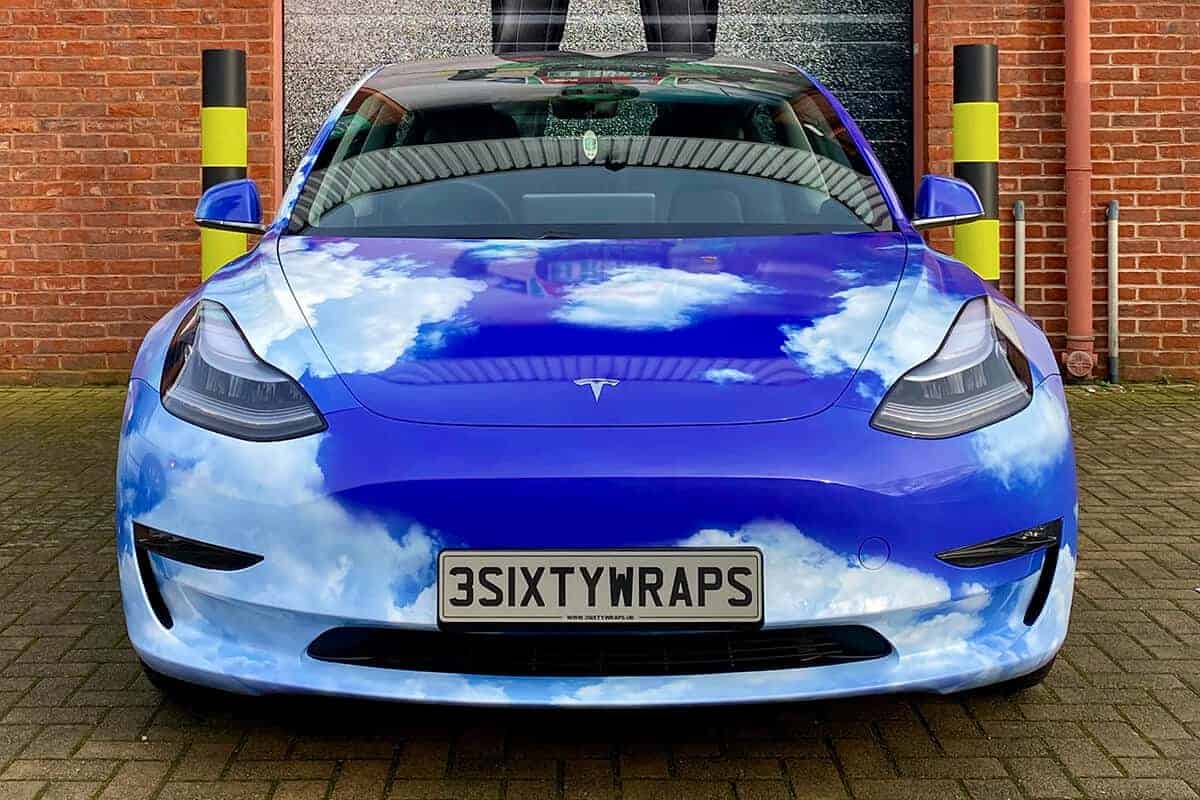Vehicle wrapping is a cost-effective alternative to spray painting your car, van, or business vehicle. And unlike spray painting, vinyl wrapping allows you to have a high-quality, detailed image, colour, or pattern added to your vehicle(s) in a bulk, easily repeatable fashion that is simple to replicate across a fleet.
However, most people may be unaware of what vehicle wrapping is and how it works, so we’ve put together this guide that answers some of the most commonly asked questions.
How Does Vehicle Wrapping Work?
Polyvinyl chloride or ‘vinyl’ has been used since the 1950s for custom lettering, logos, and details. But the use of vinyl for full vehicle wraps did not take off until the early 1990s.
By adding various chemicals to PVC, you get a flexible material that is resistant to Ultraviolet light. You then use this new material to create vinyl sheets which can be as thin as 2 millimetres. These sheets can then be added directly to the vehicle, or sent to printers and designers for custom graphics that can be as simple or as complicated as you like.
After the application of adhesive, the vinyl car wrap is applied – often being cut into smaller sections. This is then smoothed down professionally, giving your vehicle the appearance of being new. Since the early 1990s vehicle wrapping has come a long way, now being produced in metallic, gloss, matte, reflective, pearlescent, and even colour-changing varieties!
Can A Wrap Be Used To Hide Scratches?
Before you decide to get your vehicle wrapped, it is always a good idea to consult with a professional.
Get their opinion on what needs to be done in preparation to give your vehicle the best finish. Although wraps can be applied directly over scratches, they will not hide them. Because vinyl wraps closely follow your vehicle’s existing body, this means that most scratches will become more prominent. So ensure that – before taking your vehicle to be wrapped – you have repaired any scratches if you want to have the cleanest finish.
Is Using A Vehicle Wrap Better Than Getting My Car Repainted?
There are pros and cons to both processes. A paint job must be completed by a professional if you want a showroom finish. Painting works well for block colours; however, if you require more individual or special colours such as metallic, this will increase the time and the cost. Choosing to have your car repainted also means you need to rely more on a professional’s skills and abilities to hand-finish your graphics or custom designs.
Do I Need To Replace My Wrap After A Certain Time?
With good maintenance, a vinyl wrap can continue to look brand new for several years. But factors such as accidents, poor maintenance, frequent washing, sun exposure, and harsh weather can all have effects on the overall look of the wrap.
If you’ve chosen to have your car wrapped, changing your car’s appearance is a much simpler process than if you were to have a new paint job applied to the existing one. Similarly, if your vehicle is used for business purposes and you decide to change your logo, colours, branding, or anything else, altering the wrap is a simple process.
How Can I Protect My Vehicle Wrap In Colder Weather?
Poor weather conditions can harm your wrap. With the increase of rain over the winter months there comes an increase in dirt and other debris that can slowly eat away at your finish.
Ensure you clean your vehicle every fortnight with a damp cloth to remove any excess debris, but avoid using scrapers. Although cleaning is important, try to avoid doing so when temperatures drop too much, as this can cause ice damage to your vehicle.
How Can I Protect My Vehicle Wrap In Hotter Weather?
Sun exposure – although subtle – can cause your wrap to shrink, fade, or crack, resulting in repairs or replacement being required.
Try to think ahead about where you can park or leave your vehicle. If possible, park in shady spots, a garage, or an enclosed area if you intend to leave your vehicle unattended for a period of time.
In the winter months, the rain brings dust and debris, while hot conditions can also bring the same issues. Keep an eye out in case any of these substances accumulate on your vehicle.
If they do, give them a quick brush off as soon as you notice them, so they don’t have time to damage the vinyl. Frequently washing your wrap is also a good way to ensure that stains and debris don’t have a chance to cause any damage.


